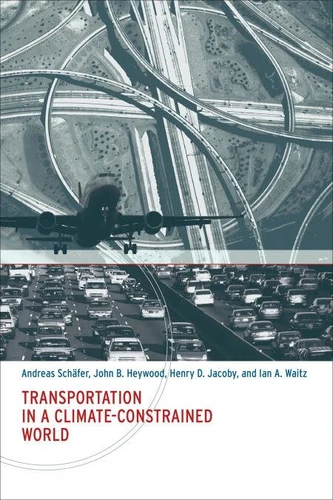Transportation in a Climate - Constrained World
Par : , , ,Formats :
Disponible dans votre compte client Decitre ou Furet du Nord dès validation de votre commande. Le format ePub protégé est :
- Compatible avec une lecture sur My Vivlio (smartphone, tablette, ordinateur)
- Compatible avec une lecture sur liseuses Vivlio
- Pour les liseuses autres que Vivlio, vous devez utiliser le logiciel Adobe Digital Edition. Non compatible avec la lecture sur les liseuses Kindle, Remarkable et Sony
- Non compatible avec un achat hors France métropolitaine
 , qui est-ce ?
, qui est-ce ?Notre partenaire de plateforme de lecture numérique où vous retrouverez l'ensemble de vos ebooks gratuitement
Pour en savoir plus sur nos ebooks, consultez notre aide en ligne ici
- Nombre de pages356
- FormatePub
- ISBN978-0-262-29689-2
- EAN9780262296892
- Date de parution17/04/2009
- Protection num.Adobe DRM
- Taille3 Mo
- Infos supplémentairesepub
- ÉditeurThe MIT Press
Résumé
A discussion of the opportunities and challenges involved mitigating greenhouse gas emissions from passenger travel. In the nineteenth century, horse transportation consumed vast amounts of land for hay production, and the intense traffic and ankle-deep manure created miserable living conditions in urban centers. The introduction of the horseless carriage solved many of these problems but has created others.
Today another revolution in transportation seems overdue. Transportation consumes two-thirds of the world's petroleum and has become the largest contributor to global environmental change. Most of this increase in scale can be attributed to the strong desire for personal mobility that comes with economic growth. InTransportation in a Climate-Constrained World, the authors present the first integrated assessment of the factors affecting greenhouse gas (GHG) emissions from passenger transportation.
They examine such topics as past and future travel demand; the influence of personal and business choices on passenger travel's climate impact; technologies and alternative fuels that may become available to mitigate GHG emissions from passenger transport; and policies that would promote a more sustainable transportation system. And most important, taking into account all of these options are taken together, they consider how to achieve a sustainable transportation system in the next thirty to fifty years.
Today another revolution in transportation seems overdue. Transportation consumes two-thirds of the world's petroleum and has become the largest contributor to global environmental change. Most of this increase in scale can be attributed to the strong desire for personal mobility that comes with economic growth. InTransportation in a Climate-Constrained World, the authors present the first integrated assessment of the factors affecting greenhouse gas (GHG) emissions from passenger transportation.
They examine such topics as past and future travel demand; the influence of personal and business choices on passenger travel's climate impact; technologies and alternative fuels that may become available to mitigate GHG emissions from passenger transport; and policies that would promote a more sustainable transportation system. And most important, taking into account all of these options are taken together, they consider how to achieve a sustainable transportation system in the next thirty to fifty years.
A discussion of the opportunities and challenges involved mitigating greenhouse gas emissions from passenger travel. In the nineteenth century, horse transportation consumed vast amounts of land for hay production, and the intense traffic and ankle-deep manure created miserable living conditions in urban centers. The introduction of the horseless carriage solved many of these problems but has created others.
Today another revolution in transportation seems overdue. Transportation consumes two-thirds of the world's petroleum and has become the largest contributor to global environmental change. Most of this increase in scale can be attributed to the strong desire for personal mobility that comes with economic growth. InTransportation in a Climate-Constrained World, the authors present the first integrated assessment of the factors affecting greenhouse gas (GHG) emissions from passenger transportation.
They examine such topics as past and future travel demand; the influence of personal and business choices on passenger travel's climate impact; technologies and alternative fuels that may become available to mitigate GHG emissions from passenger transport; and policies that would promote a more sustainable transportation system. And most important, taking into account all of these options are taken together, they consider how to achieve a sustainable transportation system in the next thirty to fifty years.
Today another revolution in transportation seems overdue. Transportation consumes two-thirds of the world's petroleum and has become the largest contributor to global environmental change. Most of this increase in scale can be attributed to the strong desire for personal mobility that comes with economic growth. InTransportation in a Climate-Constrained World, the authors present the first integrated assessment of the factors affecting greenhouse gas (GHG) emissions from passenger transportation.
They examine such topics as past and future travel demand; the influence of personal and business choices on passenger travel's climate impact; technologies and alternative fuels that may become available to mitigate GHG emissions from passenger transport; and policies that would promote a more sustainable transportation system. And most important, taking into account all of these options are taken together, they consider how to achieve a sustainable transportation system in the next thirty to fifty years.



